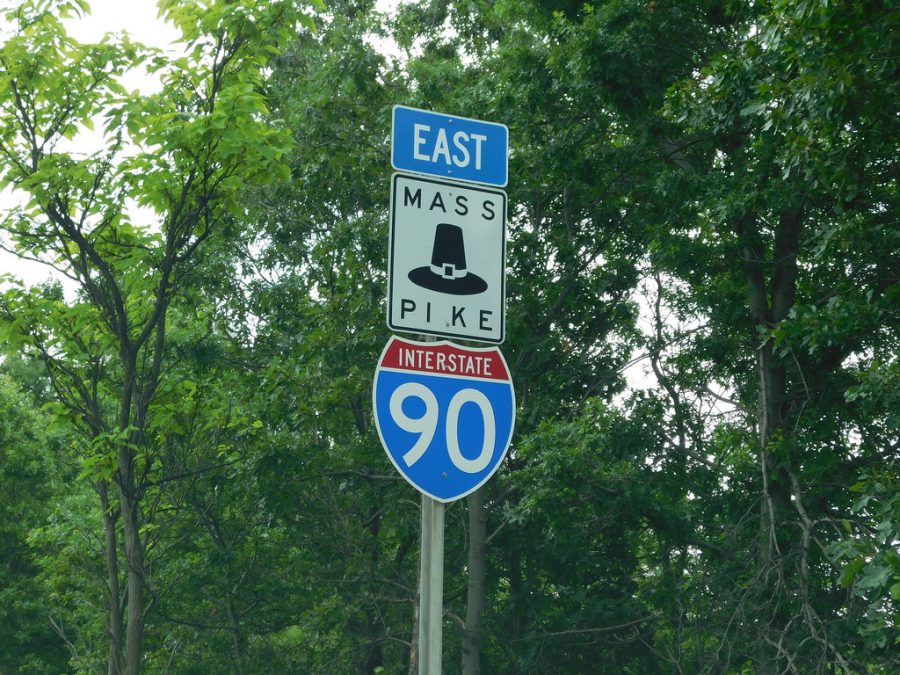NU commuters prepare for 8 years of Mass. Pike construction
Photo courtesy Creative Commons
The Massachusetts Turnpike in Allston will face major renovations, which some have compared to the Big Dig.
January 29, 2019
An overhaul of the Massachusetts Turnpike in Allston announced recently will affect drivers for approximately eight years, according to a Massachusetts Department of Transportation press release from Jan. 14.
The project will lower the currently raised portion of the highway to ground level while raising the nearby Soldiers Field Road. Additionally, the Mass. Pike, which takes a bend around the now-vacant Beacon Park Yard, will be straightened. According to the press release, the Massachusetts Department of Transportation, or MassDOT, anticipates the project will not have a contractor until late 2020.
Faculty and students who commute to Northeastern’s campus are already dreading the transport headaches to come.
With the construction, some commuters traveling through the affected area to Northeastern are planning on changing their travel habits in anticipation of what Randy Colvin, associate professor of psychology, calls “another Big Dig,” referring to Boston’s infrastructure mega-project that dragged on from 1991 into the mid-2000s.
“Three days a week I’ll take the train and two days a week I’ll drive,” Colvin said. “My thinking is once that construction starts, I don’t think I’ll ever drive until it’s complete and I’ll just take the train in.”
The overhaul is part of the MassDOT Allston Multimodal Project, which has been the subject of “intense public engagement and design development” according to a MassDOT memo from Jan. 10. A major part of the Allston project is to remove the viaduct that raises a portion of the Mass. Pike.
The viaduct is safe but is described in the press release as “outmoded and structurally deficient.” According to the release, MassDOT spends approximately $800,000 annually to maintain the viaduct.
The department considered designs that would keep the Pike at its current height, lower both roads to grade or implement a hybrid of the two. According to the memo, concerns about the environmental impact of the renovations on the Charles River ruled out designs in which both the Mass. Pike and Soldiers Field Road would be lowered. A MassDOT goal to create less obstructive infrastructure, described in the memo, ruled out the raised highway design.
The overhaul also creates the opportunity for a bicycle and pedestrian connection between the Allston neighborhood and the Charles River.
Michelle Laboy, an assistant professor of architecture at Northeastern University, said connectivity to waterfronts is an area of growth for Boston.
“I think that Boston is one of the few cities that really does not take advantage of its waterfronts enough,” Laboy said. “They’re disconnected from the public by very busy highways and I think it’s time that we reconsider that relationship, so if there was a way to improve that, I think that it would be a really net positive.”
Colvin isn’t alone in rethinking about what his commute will look like. Julie Nguyen, assistant co-op coordinator in the College of Engineering, commutes from Watertown, but never takes the Mass. Pike. Her commute could still be affected, though.
“I avoid it because of traffic,” Nguyen said. “To get onto the highway is very scary and it’s jam-packed in the morning, so it’s much more convenient for me to take Soldiers Field Road. It takes longer, but it gets me there … quicker in most cases.”
Once construction begins, she doesn’t know if that will stay the same.
“For several years it’s just going to be chaotic going to work in the morning, and that just means I’m going to have to leave for work even earlier, because then you’ll have more people taking my [Soldiers Field] road,” Nguyen said.
Laboy said the comparisons to the Big Dig, the 1991 construction project officially known as the Central Artery Tunnel Project, are “fair” but does not expect the same delays and cost overruns that came with the Big Dig.
“In terms of the kind of risk that comes with big projects, this project probably wouldn’t end up being a catastrophe the way that some people interpret the Big Dig to be,” Laboy said.
The Big Dig worked with subway stations, underground excavation, tunnels in the harbor and major highways. It went far over budget and resulted in civil and criminal cases stemming from the death of a passenger in a car driving through a tunnel. That project was also partially centered around lowering an elevated highway.
“In my mind, there was just a lot more to coordinate, a lot more innovating to be done, a lot more construction complexity than you would expect to see in just a piece of a highway — just one highway, without subways, without dealing with the ocean,” Laboy said. “Those are big differences.”







